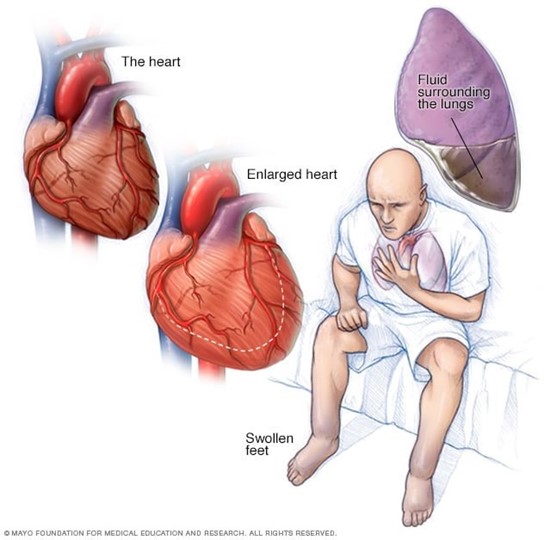A nurse suspects a client who has myasthenia gravis is experiencing a myasthenic crisis. Which of the following interventions should the nurse take?
Administer an anticholinesterase medication.
Instruct the client to perform the pursed lip breathing.
Prepare to administer a vasoconstrictor.
Prepare the client for mechanical ventilation.
The Correct Answer is D
Choice A reason:
Administering an anticholinesterase medication is not the primary intervention during a myasthenic crisis. While these medications can improve muscle strength in myasthenia gravis, they are not sufficient in the event of a crisis.
Choice B reason:
Pursed lip breathing is a technique used to manage dyspnea but is not adequate for the acute management of a myasthenic crisis, which can involve respiratory muscle paralysis.
Choice C reason:
Vasoconstrictors are not used in the treatment of myasthenic crisis. This condition is not related to vascular issues but to neuromuscular transmission failure leading to respiratory failure.
Choice D reason:
Mechanical ventilation is the correct intervention as it provides the necessary respiratory support when the patient's respiratory muscles are too weak to maintain adequate ventilation.
Nursing Test Bank
Naxlex Comprehensive Predictor Exams
Related Questions
Correct Answer is A
Explanation
Turn the client's head to the side.
The nurse should turn the client's head to the side first to prevent aspiration of oral secretions and maintain a patent airway. This is the priority action according to the airway, breathing, and circulation (ABC) principle.
Check the client's motor strength is wrong because it is not the priority action and it is not feasible during a seizure. The nurse should check the client's motor strength after the seizure to assess for any neurological deficits or postictal weakness.
Document the time the seizure began is wrong because it is not the priority action and it can be done later. The nurse should document the time, duration, type, and characteristics of the seizure, but only after ensuring the client's safety and well-being.
Loosen the clothing around the client's waist is wrong because it is not the priority action and it may not be necessary. The nurse should loosen any tight clothing that could impair breathing or circulation, but only after securing the airway and protecting the head from injury.
Turn the client's head to the side.
The nurse should turn the client's head to the side first to prevent aspiration of oral secretions and maintain a patent airway. This is the priority action according to the airway, breathing, and circulation (ABC) principle.
Check the client's motor strength is wrong because it is not the priority action and it is not feasible during a seizure. The nurse should check the client's motor strength after the seizure to assess for any neurological deficits or postictal weakness.
Document the time the seizure began is wrong because it is not the priority action and it can be done later. The nurse should document the time, duration, type, and characteristics of the seizure, but only after ensuring the client's safety and well-being.
Loosen the clothing around the client's waist is wrong because it is not the priority action and it may not be necessary. The nurse should loosen any tight clothing that could impair breathing or circulation, but only after securing the airway and protecting the head from injury.
Correct Answer is A
Explanation
a.This is appropriate as regular, moderate exercise can help improve cardiovascular health and functional capacity in clients with heart failure. It is essential to discuss appropriate types and levels of exercise based on the individual’s condition.
b.This is incorrect because clients should be instructed to notify the provider if they gain 1 kg (2.2 lbs) in one day or 2 kg (4.4 lbs) in one week. A weight gain of 0.5 kg is not typically a threshold for concern.
c. Take diuretics early in the morning and before bedtime is wrong because it may disrupt the client's sleep patern and cause nocturia. The nurse should advise the client to take diuretics early in the morning and avoid taking them in the evening or at night, unless prescribed otherwise.
d. Take naproxen for generalized discomfort is wrong because naproxen is a nonsteroidal anti-inflammatory drug (NSAID) that can worsen heart failure by causing sodium and water retention, increasing blood pressure, and reducing the effectiveness of diuretics and other heart failure medications. The nurse should advise the client to avoid NSAIDs and use acetaminophen or other alternatives for pain relief, as prescribed by the provider.

Whether you are a student looking to ace your exams or a practicing nurse seeking to enhance your expertise , our nursing education contents will empower you with the confidence and competence to make a difference in the lives of patients and become a respected leader in the healthcare field.
Visit Naxlex, invest in your future and unlock endless possibilities with our unparalleled nursing education contents today
Report Wrong Answer on the Current Question
Do you disagree with the answer? If yes, what is your expected answer? Explain.
Kindly be descriptive with the issue you are facing.
